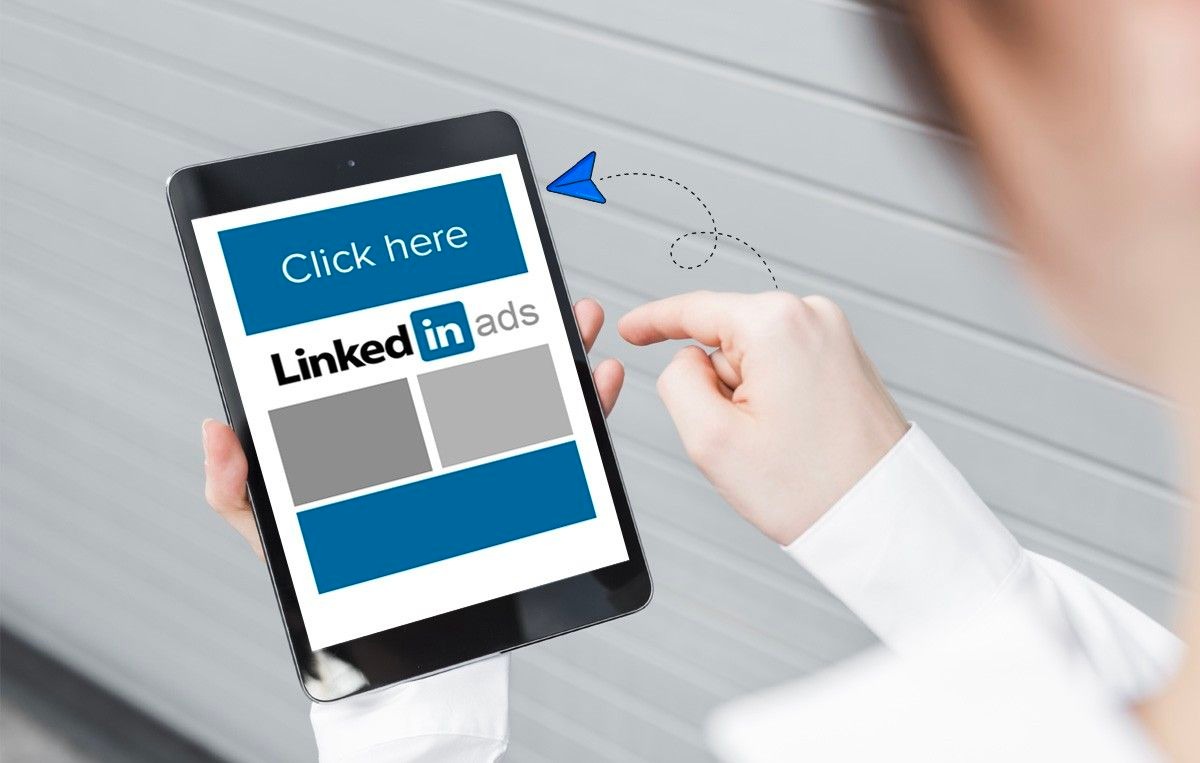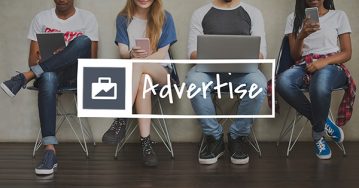LinkedIn, with its 810 million+ users, is a goldmine for marketers.
And here’s an interesting fact:
Per statistics, it’s estimated that 61 million users are senior-level influencers, and 40 million are in decision-making positions, making them a valuable business audience. These influential individuals are willing to spend four times as much money compared to the average internet user.
LinkedIn’s primary value lies in its focus on business-to-business (B2B) interactions. The platform is home to business owners and employees alike. In fact, per the same source, 65% of B2B organizations have used LinkedIn ads to attract customers, and 45% of marketers have done the same.
In this guide, we’ll explore the various ad formats available on LinkedIn, how to create an effective LinkedIn ad, and provide some advice on improving your clickthrough and conversion rates.
Let’s begin this guide with…
Types of LinkedIn Ads
LinkedIn offers a variety of ad formats tailored to specific business needs and marketing approaches. Let’s delve into these formats and their requirements.
1. Dynamic Ads
LinkedIn dynamic ads allow you to create highly customized ads for a variety of campaigns. You can increase your LinkedIn following, advertise job openings, and generate leads with downloadable content.
Adding the viewers’ names and photos makes the advertisement more relevant and engaging. LinkedIn does this automatically, saving you the hassle of creating customized adverts for each customer.
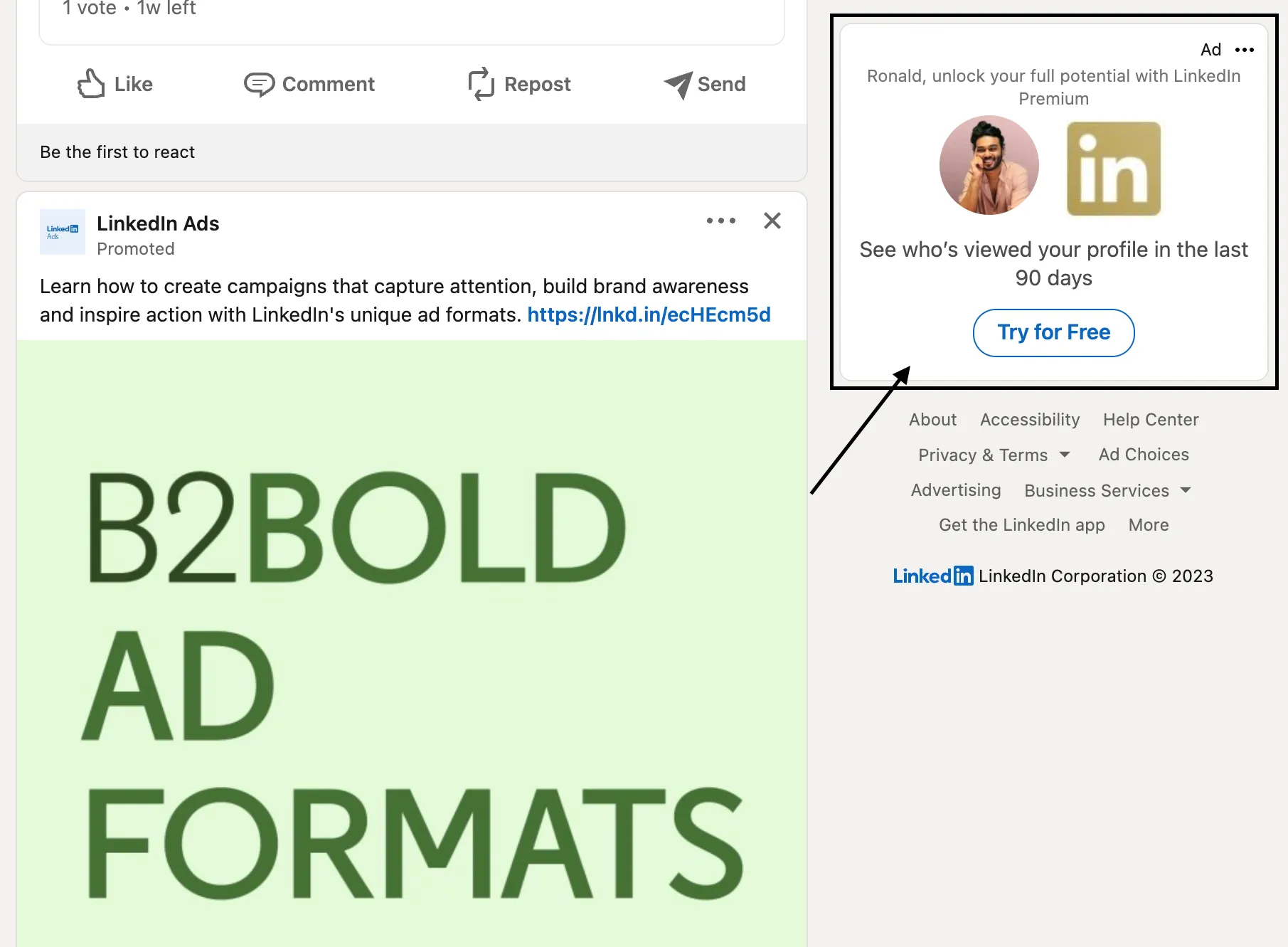
2. Text Ads
LinkedIn Text Ads are concise ad formats displayed on the LinkedIn desktop’s top or right side. Designed for PPC and CPM bidding, they allow rapid campaign creation and optimization. Each ad features a headline, description, and image.
Its strength?
Their strength lies in precise audience targeting based on parameters like location and skills, ensuring ads reach the most relevant users and enhancing engagement and conversions.
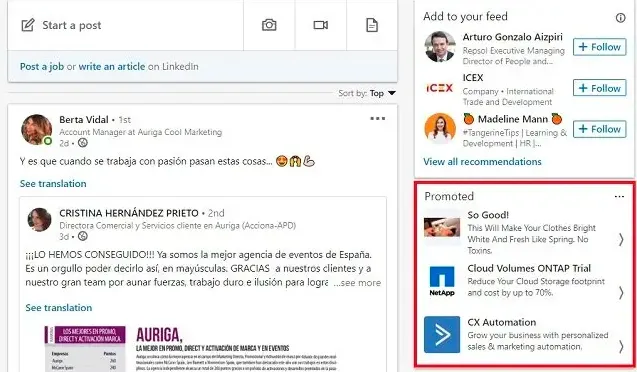
3. Sponsored Content
LinkedIn sponsored content looks like a regular post you would see on your feed, except with a CTA button and a “promoted” label.
You can choose from five different sponsored content formats — single image, carousel, video, event, and document. It’s better to occasionally switch between the options to compare their performances and see which works best for your audience.
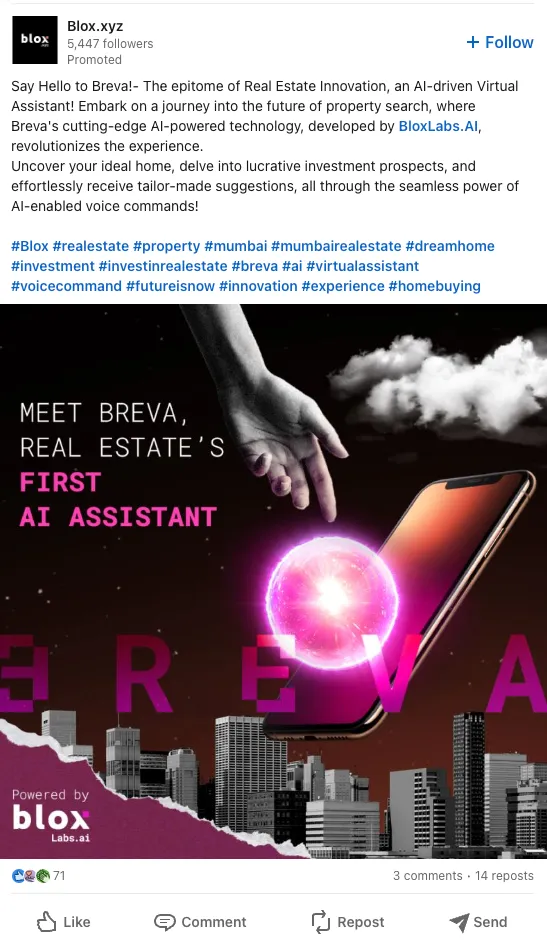
4. Sponsored Messaging
Sponsored messages allow you to reach out to your desired LinkedIn contacts directly. These messages have the potential to yield impressive conversion rates due to their targeted nature.
There are two types of sponsored messages: message ads and conversation ads. Message ads typically direct a user to a landing page to sign up for a service or make a purchase. On the other hand, conversation ads are designed to spark engaging dialogues that eventually lead to sales.
Below is an example of a message ad.
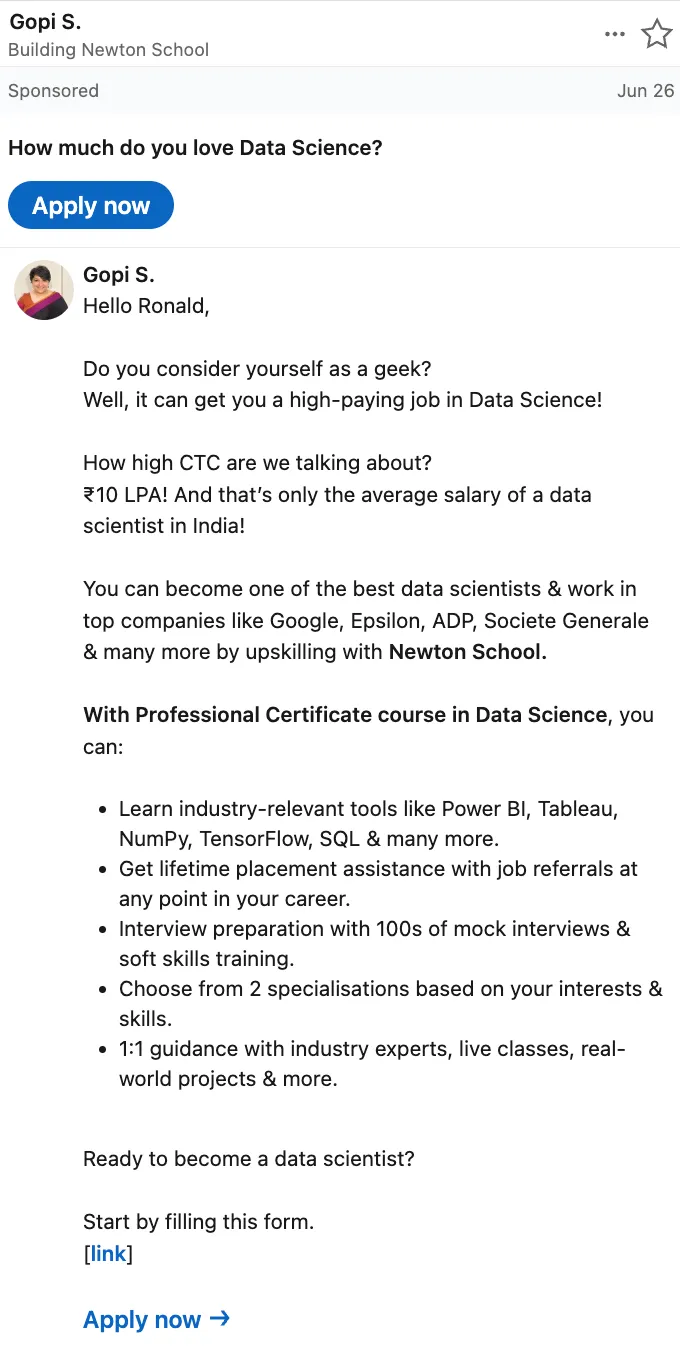
Let’s break this down further and delve into the different types of LinkedIn ad formats, shall we?
Types of LinkedIn Ad Formats
LinkedIn, with its range of ad formats tailored to various objectives, offers unique opportunities to connect with decision-makers, influencers, and potential clients. Let’s understand the nuances of each ad format, their goals, and specifications to make the most of your LinkedIn advertising campaigns.
1. Text and Display Ads
LinkedIn Text and Display Ads are a straightforward yet effective way to reach professionals and decision-makers on the platform.
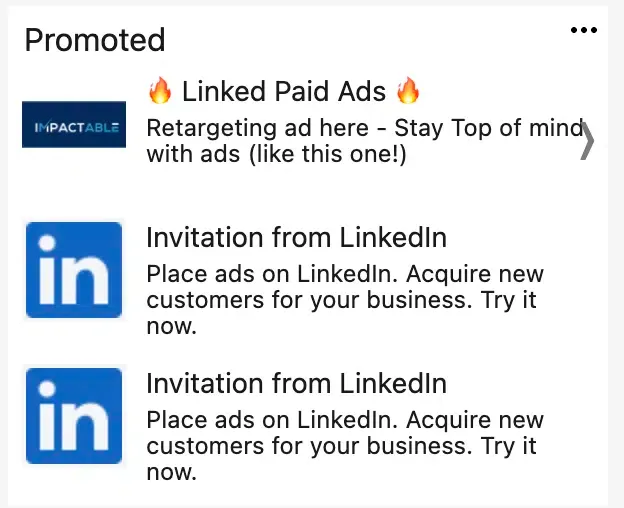
So, what makes them stand out?
These ads are similar to traditional pay-per-click ads but with the added advantage of being on a platform that caters specifically to professionals. They appear in various places on LinkedIn, such as on the right-hand side of the feed or at the top of the page. They can be crafted with a compelling headline, a brief description, and an optional image to capture the target audience’s attention.
Given the professional nature of LinkedIn, these ads are particularly effective for B2B marketing, recruitment, and other professional services.
Goal of the Ad: To drive targeted traffic to a specific destination, such as a website or landing page, and generate leads or conversions.
Specs and Dimensions:
- Placement: Top of the page or in the right column of the desktop view
- Banner Creative: Should be 300×250 pixels
- File Size: No larger than 40KB
- Formats: JPG, non-animated GIF, or PNG (without flash)
- Links: Add up to three links using a maximum of 70 characters for anchor text
2. Sponsored Content Ads
LinkedIn Sponsored Content Ads are native ads that appear directly in the LinkedIn feed alongside regular user content.
But why does this matter?
They’re designed to fit seamlessly into the feed, making them less intrusive and more engaging than traditional display ads. They can drive users to your landing page through engaging imagery and persuasive text.
Goal of the Ad: Promote content to a wider audience, drive website visits, and generate leads.
Specs and Dimensions:
- Image size: Minimum of 1200 x 627 pixels
- Image aspect ratio: 1.91:1
- Headline: Up to 70 characters
- Description: Up to 90 characters
- URL: Displayed URL should be concise
3. InMail Ads (Message Ads)
LinkedIn InMail Ads, also known as Message Ads, are personalized messages sent directly to the LinkedIn inboxes of your target audience.
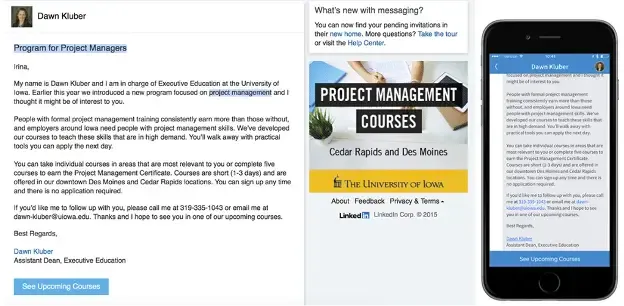
What sets them apart?
They offer a unique way to engage potential clients, partners, or candidates in a one-on-one conversation. These ads are designed to appear as personally written emails, making them more engaging and increasing the likelihood of a response. The beauty of InMail Ads is their ability to foster genuine connections and conversations.
Goal of the Ad: Engage potential clients, partners, or candidates in a personalized conversation.
Specs:
- Message subject: Up to 60 characters
- Message body: Up to 1,500 characters
- Call-to-action: Customizable CTA button
4. Dynamic Ads
LinkedIn Dynamic Ads are personalized ads that automatically use a member’s profile data, including their photo, company name, and job title, to create tailored ads.
So, what’s the big deal?
These ads offer a unique way to capture a user’s attention by making them the star of the ad.
Goal of the Ad: Drive personalized engagements and actions based on user profile data.
Specs:
- Image size: Varies based on ad type (Follower Ad, Spotlight Ad, etc.)
- Headline: Up to 25 characters
- Description: Up to 70 characters
5. Lead Gen Forms (Ad “Extensions”)
LinkedIn Lead Gen Forms come pre-filled with accurate LinkedIn profile data, allowing users to submit their information with just a few clicks. These forms can be attached to Sponsored Content, Sponsored Messaging, or Dynamic Ads. The ease of use and accuracy of data makes them a powerful tool for lead generation.
Goal of the Ad: Collect high-quality leads with ease.
Specs:
- Form headline: Up to 60 characters
- Business name: Up to 25 characters
- Offer headline: Up to 60 characters
- Offer details: Up to 160 characters
- Questions: Up to 12 custom questions
6. Follow Company Ads
LinkedIn’s Follow Company Ads are designed to boost the visibility and followers of a company’s LinkedIn page.
Why is this important?
These ads encourage LinkedIn members to follow your company, thereby increasing your organic reach on the platform. When users follow your company, they are more likely to see your updates, articles, and other shared content in their feeds.
Goal of the Ad: To increase the number of followers on your LinkedIn company page and enhance brand visibility among professionals on the platform.
Specs:
- Placement: Various places on LinkedIn, including the right-hand side of the feed
- Ad Creative: Company logo and a “Follow” call-to-action
- Ad Text: Brief compelling reason for users to follow your company
- Targeting: Can be targeted based on the user’s job function, seniority, company size, geography, and more
7. Conversation Ads
LinkedIn Conversation Ads is a unique ad format that allows advertisers to send direct messages to their target audience.
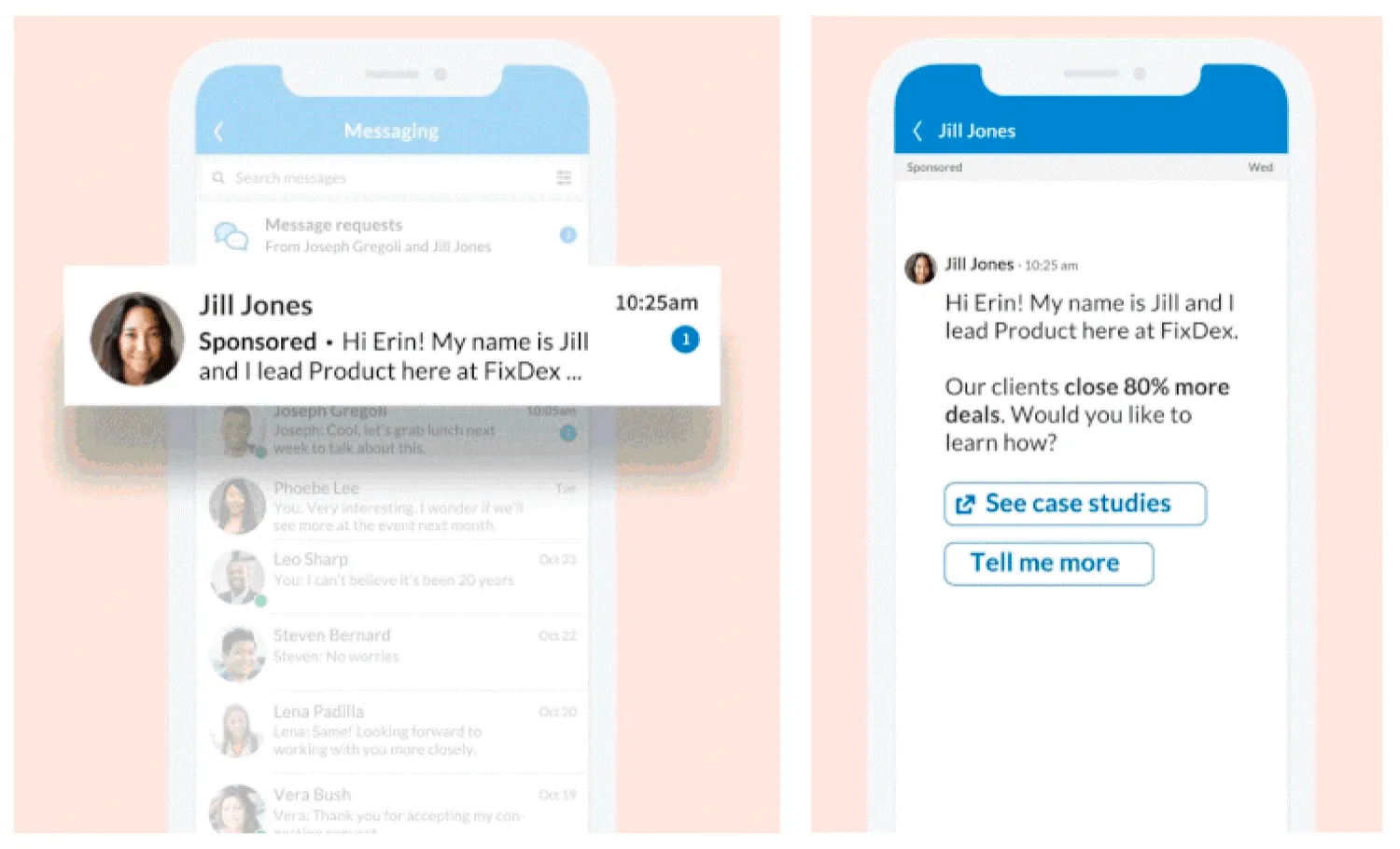
And here’s the best part:
These messages are delivered right into the LinkedIn Messaging inbox of the targeted users, ensuring a personal touch and high visibility. This ad format is particularly effective for sharing personalized content, promoting events, or making special offers.
Goal of the Ad: To engage with the target audience on a personal level, drive conversions, and promote specific content or offers directly through LinkedIn Messaging.
Specs and Recommedations:
- Message Length: It’s recommended to keep the message concise, typically around 500 characters
- Call-to-Action (CTA): Include a clear CTA to guide the recipient on the next steps
- Personalization: Utilize dynamic personalization to address the recipient by their first name
- Targeting: Can be tailored based on user demographics, job functions, industries, and more
8. Video Ads
LinkedIn Video Ads are a dynamic way to share your brand’s story, showcase your products or services, and connect with your audience.
What’s so good about it?
Video content is inherently engaging, and when combined with LinkedIn’s professional audience, it becomes a potent tool for marketers. Video Ads can be used to demonstrate product features, share customer testimonials, or even provide a behind-the-scenes look at your company.
With the rise of video content consumption, this format is essential for any modern marketing strategy.
Goal of the Ad: Engage users with compelling visual content, drive brand awareness, and generate leads.
Specs and Dimensions:
- Video Length: Recommended to be 15 seconds or less
- File Size: Between 75 KB and 200 MB
- File Format: MP4
- Frame Rate: Less than 30 FPS
- Pixel and Aspect Ratio Requirements: Minimum 360p (480 x 360; wide 640 x 360)
9. Document Ads
LinkedIn Document Ads offer a unique way to share in-depth content directly within the LinkedIn feed.
But here’s the catch:
Whether it’s an eBook, case study, or infographic, Document Ads allow members to read and download without leaving the platform. Advertisers can choose to share content freely or gate the document with a Lead Gen Form to capture leads.
Goal of the Ad: Share in-depth content, establish thought leadership, and capture quality leads by providing valuable resources directly within the LinkedIn feed.
Specs:
- File Types Supported: PDF, DOC, DOCX, PPT, PPTX
- Document Limits: Up to 300 pages or 1 million words
- Aspect Ratios: Vertical, Horizontal, Square
- File Size: Maximum of 100MB
10. Event Ads
Promoting events on LinkedIn has never been easier. With Event Ads, you can highlight specific events, webinars, or seminars directly on the platform.
Why this is crucial?
These ads provide all the essential details, ensuring that your target audience knows when, where, and how to join. Whether you’re hosting a virtual conference or an in-person workshop, Event Ads can boost attendance and engagement.
Goal of the Ad: Promote specific events, generate awareness, drive registrations, and engage the target audience.
Specs:
- Ad Placement: Directly within the LinkedIn feed
- Event Details: Clear display of date, time, and joining instructions
- Engagement Options: Users can express interest, register, or share the event
- Visual Elements: Incorporate compelling imagery or graphics related to the event
11. Carousel Ads
Carousel Ads on LinkedIn are a form of Sponsored Content that allows advertisers to display a series of swipeable cards, offering a richer and more interactive ad experience. These ads are designed to capture and maintain the audience’s attention through visual storytelling.
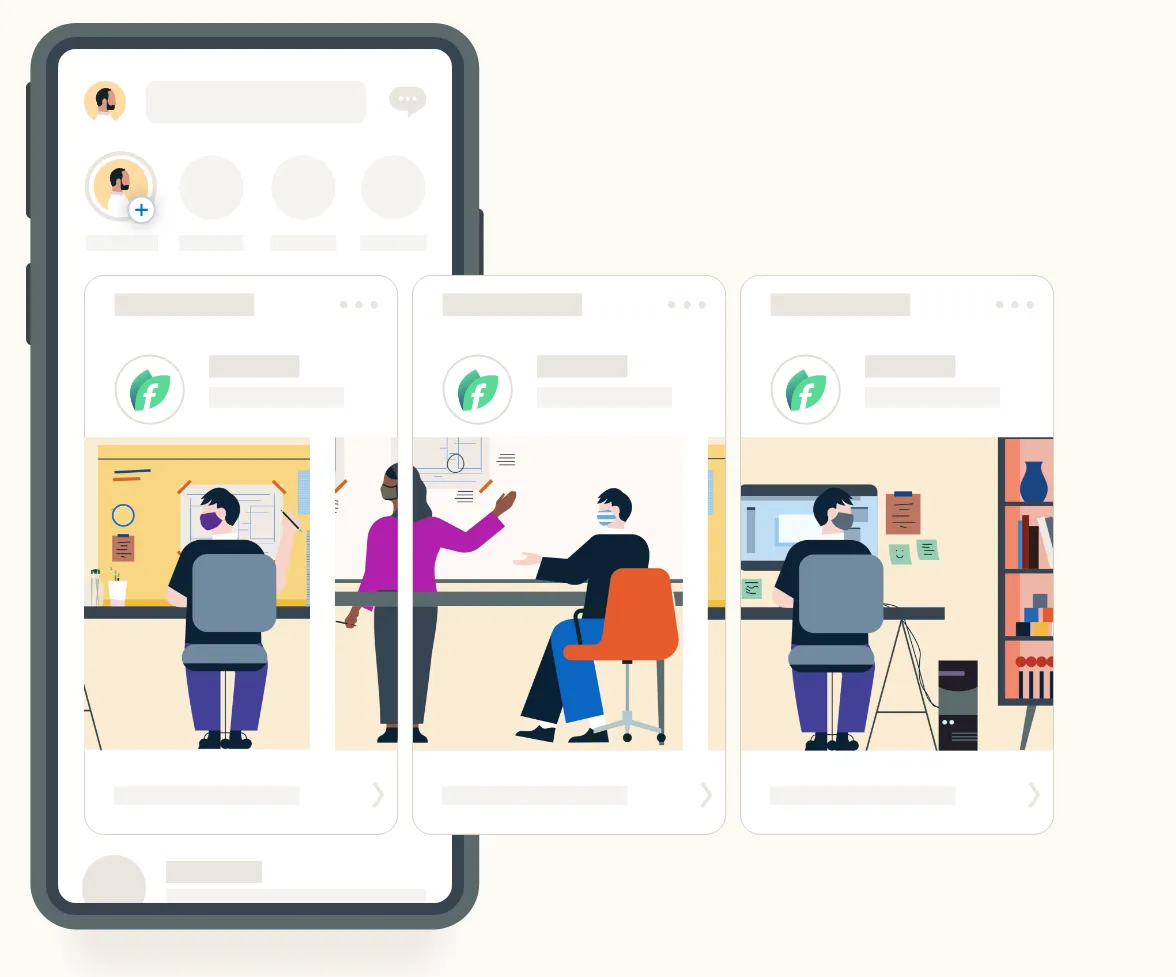
Each card in the carousel can feature a unique image, headline, and call-to-action, making it possible to showcase multiple offers or aspects of a single product or service.
Carousel Ads provide advertisers with the opportunity to tell a story, promote multiple products, or delve deeper into a single topic, all within a single ad unit. The format is especially beneficial for brands aiming to provide a more immersive and engaging experience to their target audience.
Goal of the Ad: To engage the audience with interactive storytelling, promote multiple offers, or provide a detailed view of a single topic, driving brand awareness, consideration, and conversions.
Specs and Dimensions:
- Cards Requirement: Minimum of two cards and a maximum of 10 cards
- Intro Text: Limited to a maximum of 255 characters (may truncate at 150 characters on some mobile devices)
- Image Specs for Individual Cards: Max file size: 10 MB. Recommended image spec: 1080×1080 pixels with a 1:1 aspect ratio. Supported formats: JPG, PNG, GIF (non-animated only)
- Headline Text for Each Card: 45-character limit for carousel ads directing to a landing page. 30-character limit for carousel ads with a Lead Gen Form CTA
- CTA: Video format is not available for this ad format. Carousel ads with Lead Gen Forms include a CTA button in each image card. Standard carousel ads that direct visitors to a landing page don’t include a separate CTA button
So, now that we understand the different LinkedIn ad formats, let’s look at creating a LinkedIn ad step-by-step.
How to Create a LinkedIn Ad: A Step-by-Step Process
Let’s understand how to create a LinkedIn ad and start advertising on the platform.
Step 1: Create a LinkedIn Page
Before you can tap into the advertising potential of LinkedIn, it’s essential to establish a strong foundation with a dedicated LinkedIn Page for your business.
This isn’t just a formality; it’s your brand’s professional identity on the platform.
If you haven’t set one up yet, head over to LinkedIn’s ‘Create a Company Page’ section. The process is intuitive, guiding you to showcase your company’s story, services, and corporate culture.
Step 2: Navigating the LinkedIn Campaign Manager
Once your business page is active, the next step is to familiarize yourself with the LinkedIn Campaign Manager.
What is this?
Essentially, the LinkedIn Campaign Manager is a centralized platform designed by LinkedIn to help advertisers create, manage, and optimize their ad campaigns on the platform. Think of it as your control room for all advertising activities, from campaign creation to performance analytics. Sign in to the platform (it only takes a few seconds to create one, in case you haven’t signed up for it).
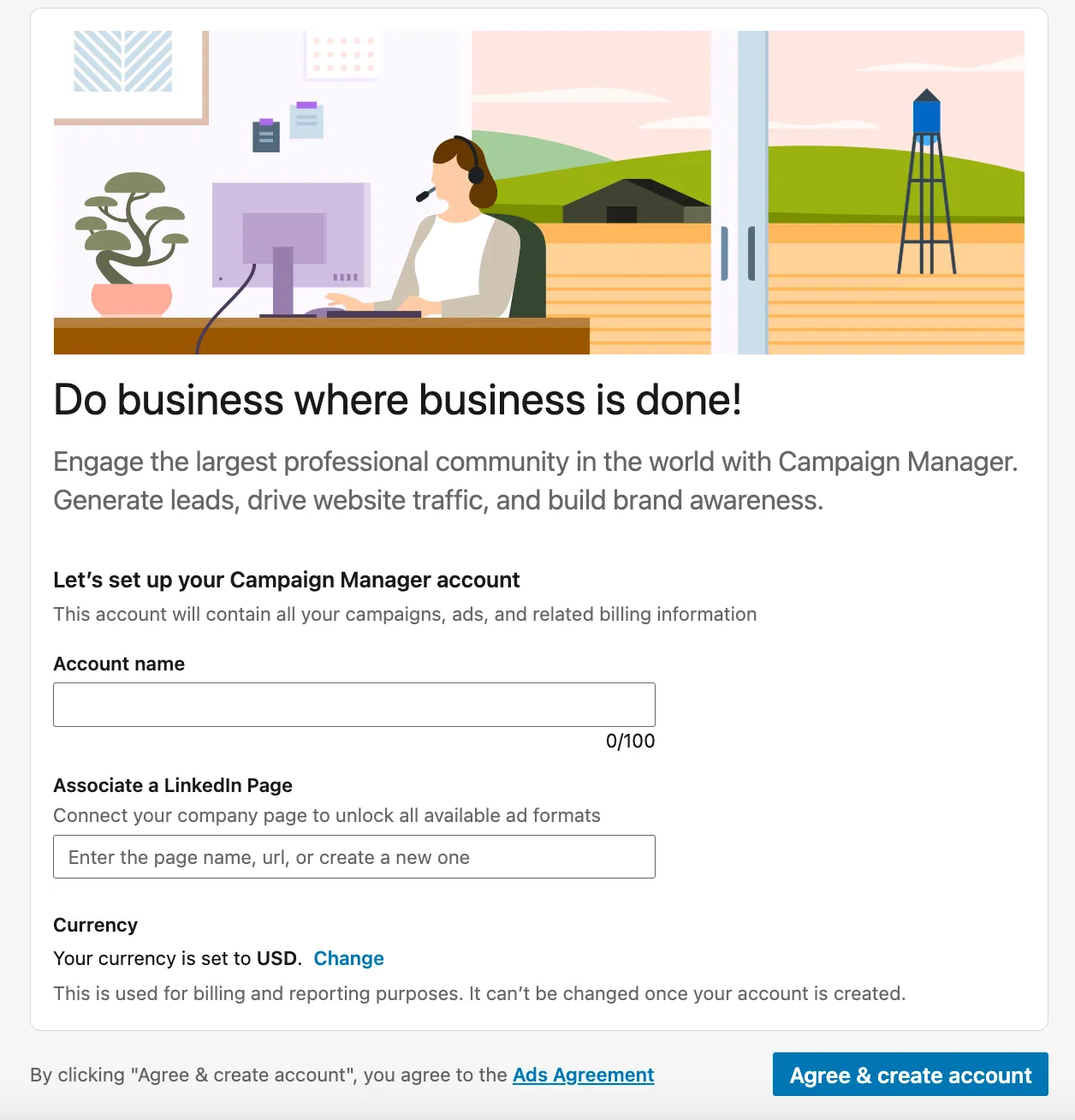
Step 3: Choose Your Campaign Objective
Every successful campaign starts with a clear objective.
LinkedIn understands this and offers a suite of objectives tailored to various business outcomes. Whether you’re aiming to boost your brand’s visibility, drive traffic to a landing page, or generate actionable leads, there’s an objective designed for that.
Your chosen objective will shape the rest of your campaign, from ad formats to targeting options.
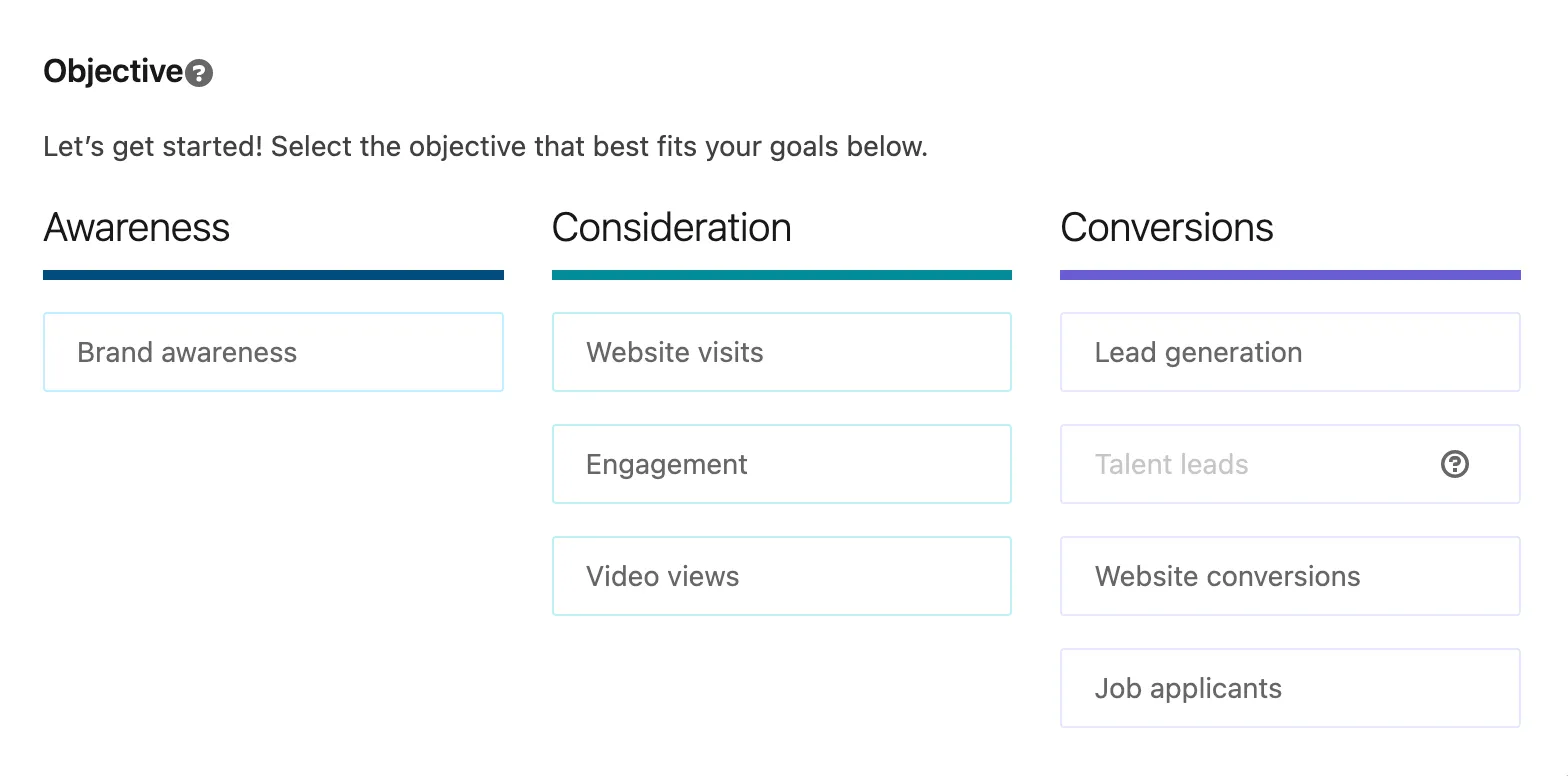
Step 4: Honing in on Your Target Audience
Do you know what is one of LinkedIn’s strengths?
Precise targeting.
With a plethora of options at your disposal, you can narrow down your audience based on their professional background, geographical location, industry, and even their interactions with your company.
Additionally, LinkedIn offers a feature called “Matched Audiences.” This allows you to target your ads to specific lists of individuals, such as your existing contacts or website visitors, ensuring a more personalized ad experience.
By leveraging both precise targeting and Matched Audiences, you ensure that your ad content reaches the eyes of those who matter most, maximizing your return on investment.
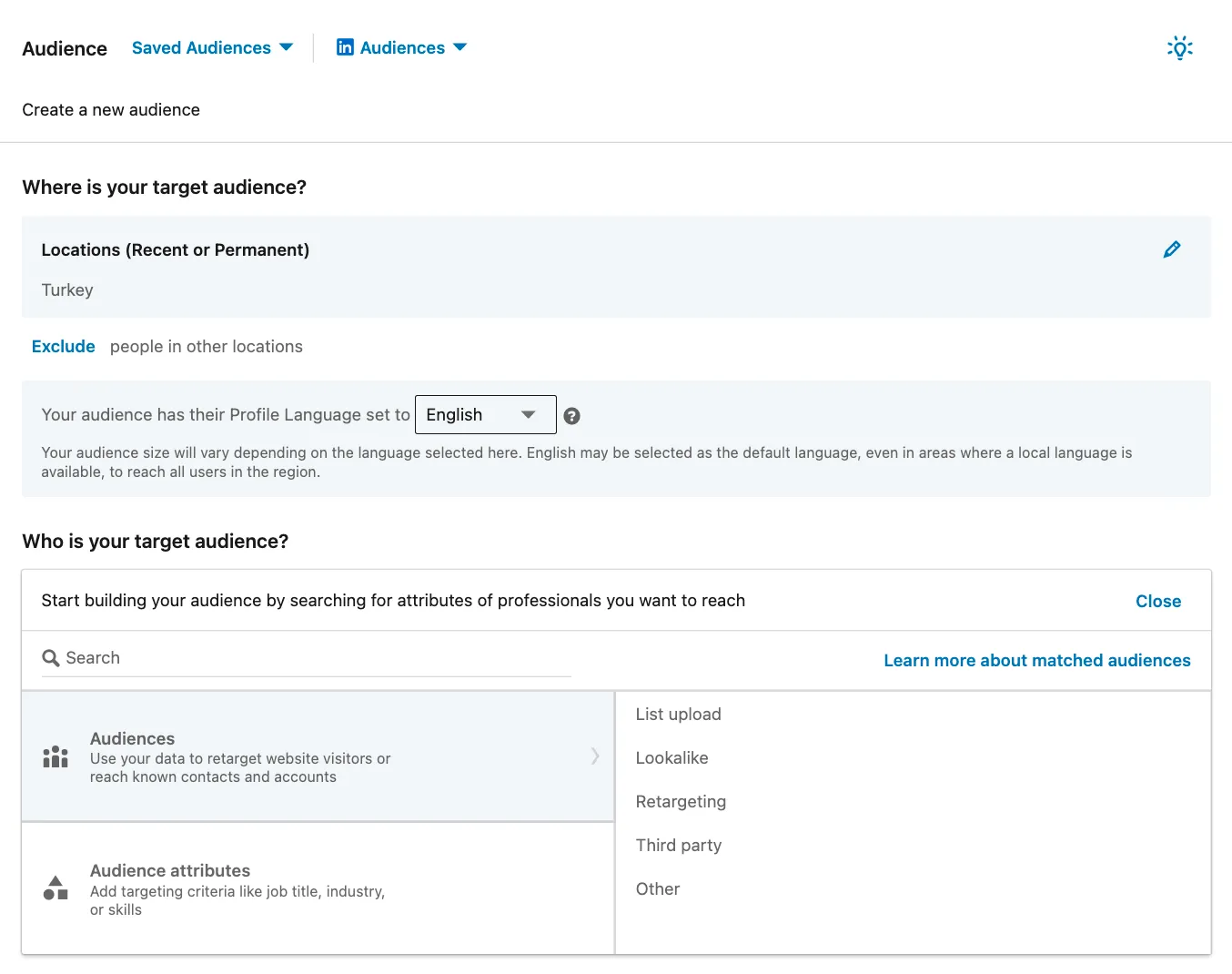
Step 5: Choosing Your Ad Format
Depending on your campaign’s objective and your audience’s preferences, LinkedIn offers a range of ad formats.
From Sponsored Content that seamlessly integrates into the news feed to personalized Message Ads or visually engaging Dynamic Ads, there’s a format for every message. It’s crucial to align your ad format with your target audience’s campaign goals and preferences.
Step 6: Setting Your Budget
Budgeting is more than just setting a spending limit. With LinkedIn, you can decide how you want to allocate your funds.
Whether you’re looking to set a daily cap, an overall campaign budget, or deciding on a payment method like pay-per-click or per-impression, LinkedIn offers the tools to tailor your spending to your strategy.
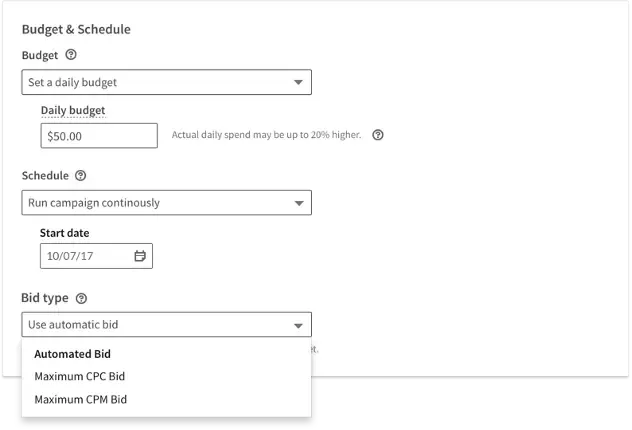
Our advice?
Consider a daily budget of at least $10 to ensure your ad gets adequate visibility.
Step 7: Creating Your Ad
Your ad’s content is its heart and soul. A compelling narrative combined with striking visuals can make all the difference.
Focus on addressing your audience’s needs, challenges, or aspirations. Ensure your visuals, whether images or videos, are of high quality and resonate with the message you’re conveying.
Step 8: Monitoring, Measuring, and Optimizing
Make sure you regularly dive into LinkedIn’s analytics tools to understand how your campaign is performing. Track metrics that align with your objectives, and don’t hesitate to tweak elements of your campaign based on the insights you gather. Continuous optimization ensures that your campaign remains effective and delivers the desired results.
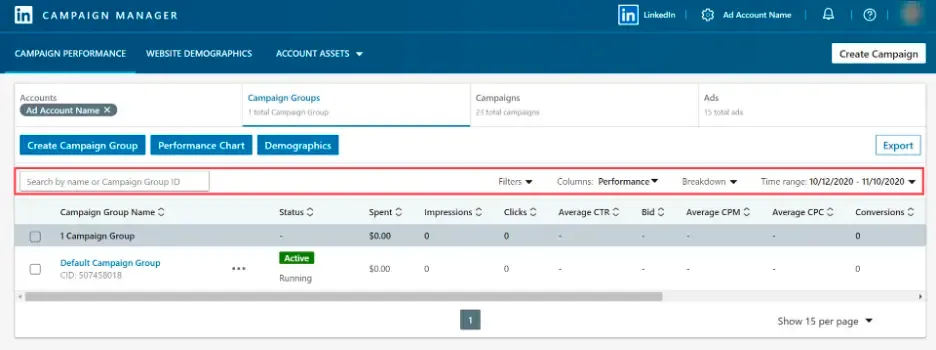
Alternatively, you can consider using a third-party social media management tool like SocialPilot. This platform can help you dive even deeper into LinkedIn analytics.
What can you expect?
SocialPilot provides a comprehensive view of your LinkedIn Company Page’s performance metrics, such as engagement rates, follower count, reach, and impressions. By integrating these insights, you can make more informed decisions, identify best-performing posts, and further refine your LinkedIn strategies.
Now, moving on to another important point, which is…
7 Tips for Successful LinkedIn Ads
Now that you’re familiar with the various LinkedIn ad options and have a sense of how much to allocate toward them let’s dive into the best practices for LinkedIn ads.
1. Define Your Target Audience
Understanding your target audience is the first and most crucial step in creating a successful LinkedIn ad campaign.
LinkedIn’s ad platform provides a wealth of targeting options, allowing you to narrow down your audience based on their location, company details, demographics, education, job experience, and interests.
For instance, if you’re a software company selling project management tools, you might want to target project managers in mid to large-sized companies. You could further refine your audience by focusing on specific industries or regions.
However, it’s important not to get overly specific with your targeting.
If you’re new to LinkedIn ads, start with broader targeting and gradually refine your audience based on the performance of your ads. Remember, the goal is to reach the people most likely to be interested in your product or service, and LinkedIn’s targeting options make this possible.
2. Choose the Right Ad Format
LinkedIn offers a variety of ad formats, each designed to serve a specific purpose. These include Sponsored Content, Text Ads, Sponsored Messaging, Dynamic Ads, and more.
The choice of ad format should align with your campaign objectives and audience preferences.
For example, if your goal is to increase brand awareness, Sponsored Content might be the best choice. This ad format appears directly in your target audience’s news feed, making it more likely to be seen and engaged with.
On the other hand, if your goal is to generate leads or drive conversions, Sponsored Messaging might be a better choice. This ad format allows you to send personalized messages directly to your target audience’s LinkedIn inbox, providing a more direct and personal way to engage with potential customers.
Next, ensure you…
3. Craft Clear and Compelling Ad Copy
The success of your LinkedIn ad campaign largely depends on the quality of your ad copy. It should be clear, compelling, and concise, with a strong call-to-action (CTA). Your audience should know exactly what you’re offering and what they should do next.
For instance, if you’re promoting a free webinar, your ad copy might read: “Join our free webinar to learn the latest digital marketing strategies. Register now to secure your spot!” This ad copy clearly communicates the offer (a free webinar on digital marketing strategies) and includes a strong CTA (“Register now”).
Remember:
Your ad copy is your opportunity to convince your audience that your offer is worth their time and attention, so make it count.
4. Use High-Quality Visuals
Visuals are crucial to any ad campaign, and LinkedIn ads are no exception. Whether you’re using Single Image Ads, Carousel Ads, or Video Ads, your visuals should be high-quality and relevant to your ad copy.
For instance, if you’re promoting a new product, you might use a high-quality image of the product or a short video demonstrating its features.
Visuals can capture your audience’s attention and make your ad more engaging. However, ensuring that your visuals align with your brand and are consistent across all your ads is important. This can help improve brand recognition and make your ads more effective.
5. Monitor and Optimize Your Ads
Once your LinkedIn ad campaign is live, monitoring its performance and making necessary adjustments to improve its effectiveness is important. LinkedIn’s Campaign Manager provides detailed metrics to help you understand your ads’ performance.
What do these insights do?
They can help you identify what’s working and what’s not, allowing you to optimize your ads for better results.
For instance, if you notice that your ad is getting a lot of impressions but a few clicks, this might indicate that your ad copy or visuals aren’t compelling enough. In this case, you could test different ad variations to see which performs better.
Remember, continuous testing and optimization are the key to a successful ad campaign.
6. Leverage LinkedIn’s Unique Features
LinkedIn offers unique features that can help enhance the effectiveness of your ad campaign. These include Lead Gen Forms and Matched Audiences.
Lead Gen Forms make it easier for users to share their contact information, helping you generate more qualified leads. They pre-fill the user’s LinkedIn profile data, reducing the effort required to fill out the form and increasing the likelihood of form submission.
Matched Audiences, on the other hand, allow you to retarget people who’ve visited your website or upload a list of email contacts. This can help you reach people who’ve already shown interest in your product or service, increasing the chances of conversion.
Lastly…
7. Test and Learn
The initial weeks of your campaign are typically a learning phase. Testing different targeting criteria, ad formats, and ad copies is important to learn what works best for your brand.
For instance, you might start by testing two ad copies to see which resonates more with your audience. Once you’ve identified the winning ad copy, you could then test different visuals or targeting criteria.
The goal is continuously learning and improving your campaign based on your findings. Remember, what works for one brand might not work for another, so finding what works best for your specific brand and audience is important.
Conclusion
LinkedIn advertisements offer a powerful way to reach a professional audience.
By understanding your target demographic, setting your objectives, allocating resources, and selecting the appropriate ad formats, you can maximize the effectiveness of your LinkedIn ads.
It’s imperative that you create engaging content, warm up your audience, keep your ads concise, and always test your ads for the best results.
